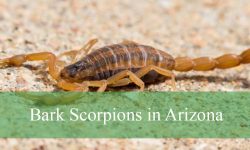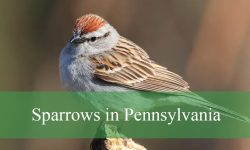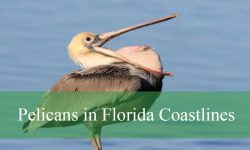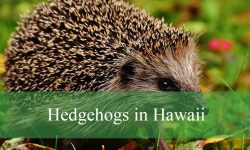Having spent many years living in Mississippi, I’ve come to appreciate the incredible variety of birds that fill the skies and woodlands here. Birds in Mississippi aren’t just part of the scenery—they’re woven into the daily rhythm of life, from the bright mornings to quiet evenings. The state’s mix of forests, rivers, and wetlands creates the perfect home for a wide range of feathered friends.
This list covers 35 of the most common birds in Mississippi that I’ve often seen while exploring parks, backyards, and countryside roads. Each bird has its own unique story, look, and song that make spotting them a special experience. With photos and key identification tips, you’ll quickly recognize these familiar residents of Mississippi’s outdoors.
Mississippi’s birds live across many different habitats, and knowing where to find them makes all the difference. From the chirping in your backyard to the calls echoing over the wetlands, these birds bring the state’s natural beauty to life. This guide will help you connect with the birds that have become part of my own Mississippi journey.
Different Types of Birds in Mississippi
Tufted Titmouse (Baeolophus bicolor)
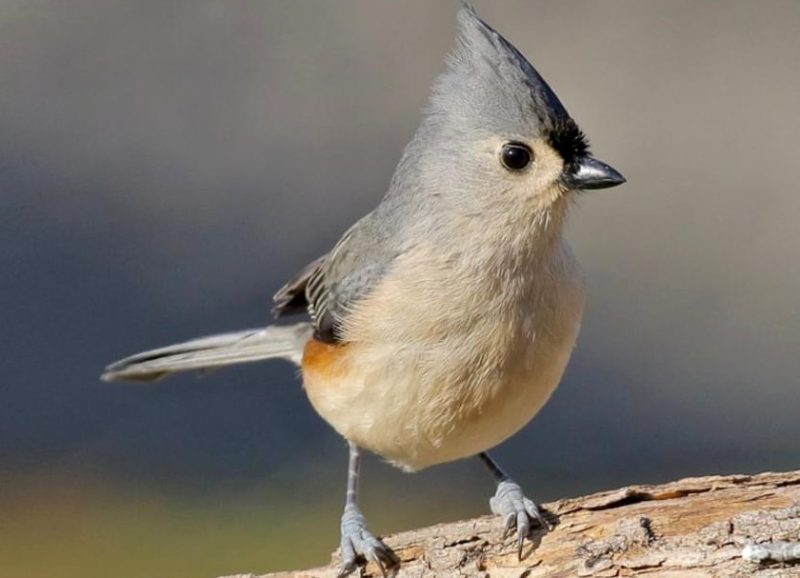
The Tufted Titmouse is a small, crested songbird with a gray upper body, white underparts, and a soft peach wash along the flanks. Its black forehead and large black eyes give it a curious, alert expression. The bird’s crest is a key identification feature, often raised when excited or alarmed.
Measuring about 6 to 6.5 inches in length, this bird is slightly larger than a chickadee. It is a permanent resident throughout Mississippi, found in mixed forests, parks, and backyard gardens. Tufted Titmice are social and often associate with chickadees and woodpeckers while foraging. They are known for their loud, whistled “peter-peter-peter” call.
Their diet includes insects, caterpillars, nuts, berries, and seeds. They are frequent visitors at feeders, especially during colder months, where they appreciate sunflower seeds and peanuts. These birds often use natural cavities or nest boxes for breeding. In Mississippi, they are widespread and adapt well to both forested and suburban environments.
Northern Cardinal (Cardinalis cardinalis)

The Northern Cardinal is one of the most recognizable birds in Mississippi, thanks to its vivid red plumage and striking black facial mask on males. Females are more subdued in color, displaying warm brown tones with hints of red on the crest, wings, and tail. Both sexes have a prominent crest and a thick orange-red beak, which is well-suited for cracking seeds. Their melodic whistling songs can be heard year-round and are often among the first sounds at dawn.
These birds are medium-sized songbirds, measuring around 8 to 9 inches in length. They are non-migratory and remain in Mississippi throughout the year, making them a common sight at backyard feeders and forest edges. Cardinals prefer a mix of open woodlands, dense shrubs, and suburban gardens where they can find shelter and nesting opportunities.
Northern Cardinals feed mainly on seeds, berries, and fruits, but they also consume insects such as beetles, caterpillars, and grasshoppers, especially during the breeding season. They are highly territorial and monogamous, often seen in pairs. In Mississippi, they are widespread and abundant across rural, suburban, and even urban areas, delighting birdwatchers with their vivid color and cheerful song.
Carolina Chickadee (Poecile carolinensis)
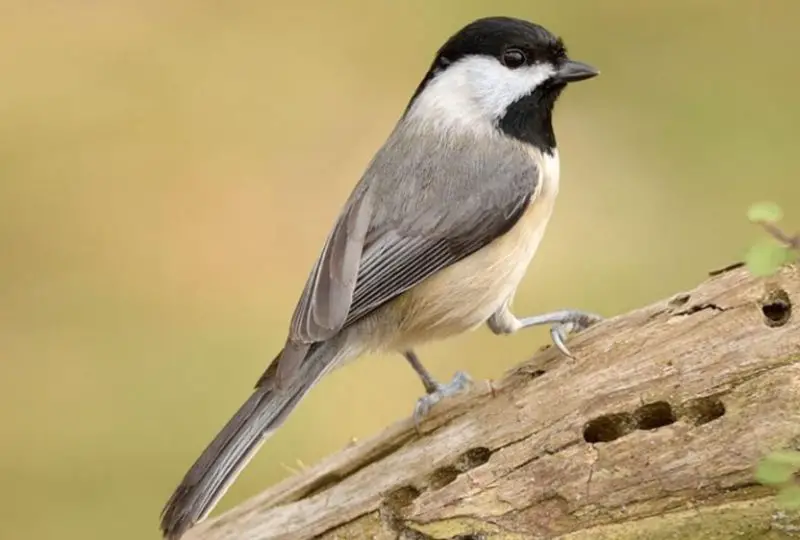
The Carolina Chickadee is a tiny, energetic bird easily identified by its black cap and bib, white cheeks, and soft gray body. It has a short neck and a rounded body, giving it a rather compact appearance. These birds are known for their distinct “chick-a-dee-dee-dee” call, which varies in intensity depending on the level of threat or excitement they experience.
Chickadees are around 4.5 to 5 inches long and weigh less than half an ounce. They are year-round residents in Mississippi and can be found in a variety of habitats including deciduous forests, wooded suburbs, and parks. They often forage in small flocks, flitting actively through trees and shrubs in search of food.
Their diet consists of insects, spiders, seeds, and berries. They frequently visit bird feeders, especially in winter, where they prefer sunflower seeds and suet. Carolina Chickadees are cavity nesters, often using old woodpecker holes or nest boxes. In Mississippi, they are common in both rural and developed areas where mature trees are present.
Carolina Wren (Thryothorus ludovicianus)
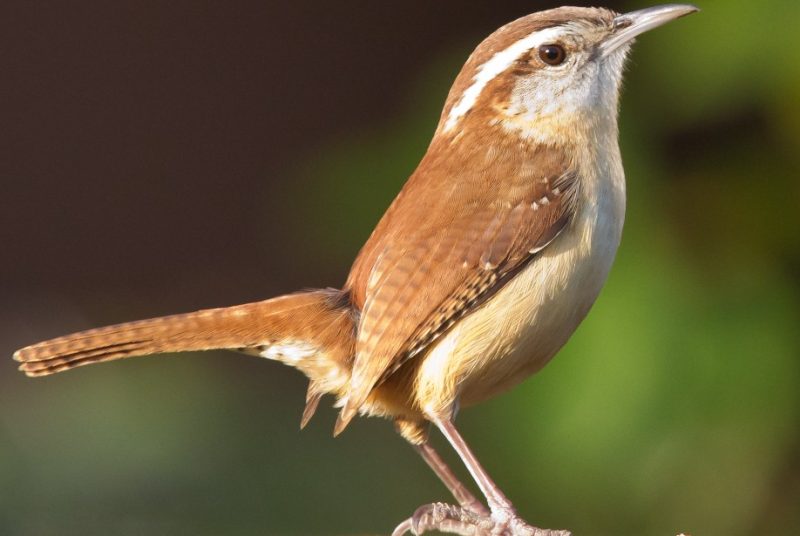
The Carolina Wren is a chunky, energetic bird with rich reddish-brown plumage, a bold white eyebrow stripe, and a slightly curved bill. Its short tail is often held upright, giving it a distinctive silhouette. This species is famous for its loud, ringing song, which can include a variety of phrases repeated rapidly.
Carolina Wrens measure about 5.5 inches in length and are present year-round in Mississippi. They prefer dense vegetation such as brush piles, thickets, and tangled vines in forests and gardens. Although shy and elusive in behavior, they are very vocal and their presence is usually revealed by sound before sight.
Their diet consists mostly of insects and spiders, but they will occasionally eat berries and suet. These wrens frequently visit feeders, especially during cold weather. They build domed nests in unusual places like hanging baskets, mailboxes, or open sheds. Carolina Wrens are common throughout Mississippi and thrive in both wild and developed landscapes.
Blue Jay (Cyanocitta cristata)

The Blue Jay is a striking bird with bright blue feathers, a white chest, and bold black markings around its neck and face. Its crest can be raised or lowered depending on its mood, and its loud “jay jay” calls make it one of the most vocal and noticeable birds in the state.
Blue Jays are about 9 to 12 inches long and are members of the corvid family, known for their intelligence. They inhabit deciduous and mixed woodlands, but they’re also frequently seen in suburban neighborhoods and parks. Blue Jays are social and often travel in noisy family groups.
Their diet includes acorns, seeds, nuts, fruits, insects, and occasionally small vertebrates. They also cache food for later consumption. These birds are known to mimic hawk calls and are aggressive defenders of their nests. In Mississippi, Blue Jays are widespread and often seen at feeders, especially those offering peanuts or sunflower seeds.
American Robin (Turdus migratorius)
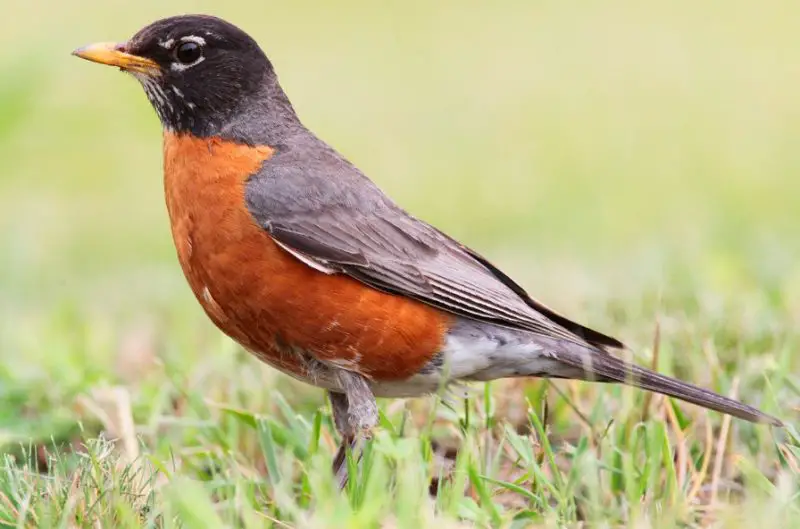
The American Robin is a well-known songbird recognized by its warm orange-red breast, grayish back, and yellow bill. It is often seen hopping across lawns or perching in trees, especially during early morning hours. Males tend to be slightly darker in color than females, and both sexes emit a clear, melodious song that signals the arrival of spring in Mississippi.
This bird measures around 9 to 11 inches in length and is one of the earliest breeders in the region. American Robins are highly adaptable, found in woodlands, parks, gardens, and open fields. They are also known to nest in urban areas, often building nests on ledges, windowsills, or trees close to human activity.
Their diet consists primarily of earthworms, insects, and berries. Robins are particularly active during early mornings and evenings, when they forage on the ground for worms. In Mississippi, they are most common during spring and fall migration, although some individuals remain through winter in milder areas.
Red-bellied Woodpecker (Melanerpes carolinus)

The Red-bellied Woodpecker is a medium-sized woodpecker with a pale gray face and underparts, black-and-white barred back, and a striking red crown that extends from the bill to the nape in males. Despite the name, the reddish tint on the belly is subtle and often hard to see.
These birds are about 9 to 10 inches long and are found year-round throughout Mississippi. They inhabit woodlands, swamps, and suburban areas with large trees. They are frequently heard before being seen, thanks to their loud calls and drumming on tree trunks.
Their diet includes insects, fruits, nuts, seeds, and occasionally bird eggs or small lizards. They are frequent visitors to feeders, especially those offering suet, peanuts, or sunflower seeds. Red-bellied Woodpeckers are commonly observed clinging to tree trunks or darting through wooded areas in search of food.
Downy Woodpecker (Dryobates pubescens)

The Downy Woodpecker is the smallest woodpecker species in North America, with a compact body, white belly, black wings with white spots, and a short, chisel-like bill. Males have a small red patch on the back of the head, while females do not.
Measuring only 5.5 to 6.5 inches in length, this bird is agile and easily adapts to a variety of environments. It is found year-round in Mississippi in woodlands, parks, and suburban gardens. Downy Woodpeckers are often seen climbing tree trunks and branches or clinging to feeder poles.
They feed on insects, particularly larvae and beetles found in tree bark, as well as seeds and berries. They readily visit backyard feeders, especially those offering suet. Their high-pitched whinnying calls and short bursts of drumming are familiar sounds in Mississippi’s wooded areas.
White-throated Sparrow (Zonotrichia albicollis)
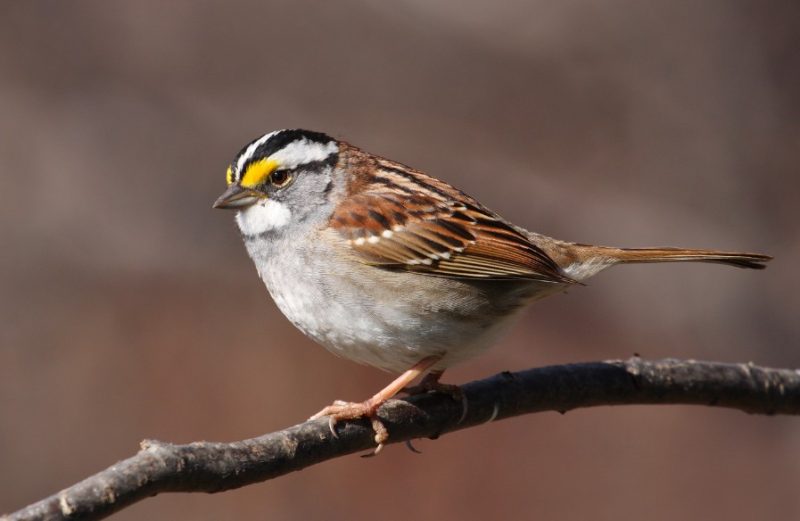
The White-throated Sparrow is a medium-sized sparrow known for its bold white throat patch, yellow lores (between the eye and bill), and black-and-white striped head. Some individuals may show tan stripes instead of white, a common variation.
These sparrows are typically 6.5 to 7 inches long and are winter visitors to Mississippi, arriving in late fall and staying until early spring. They prefer dense undergrowth, woodland edges, and brushy areas where they forage for food. Often found scratching through leaf litter on the forest floor, they can also be seen at feeders.
Their diet consists of seeds, berries, and insects. They are ground foragers and may gather in small flocks during the colder months. The White-throated Sparrow’s whistled song, “Oh-sweet-Canada-Canada,” can sometimes be heard during early spring in Mississippi before they return north to breed.
House Finch (Haemorhous mexicanus)
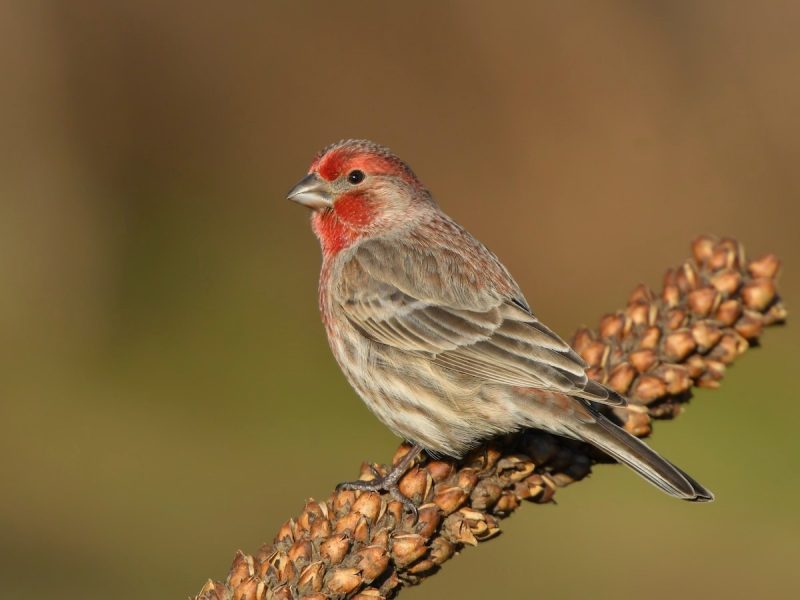
The House Finch is a small, social bird with a conical bill and streaked brown body. Males have rosy red coloring on the head, chest, and rump, which varies depending on diet. Females lack the red coloration and have more uniform streaking.
Measuring around 5 to 6 inches in length, House Finches are common in suburban and urban areas across Mississippi. They are often seen in groups at feeders, especially in winter, and are known for their cheerful, warbling song. These birds are non-migratory and often breed near buildings or on porch ledges.
Their diet includes seeds, fruits, and buds. House Finches are frequent visitors at bird feeders where they prefer sunflower seeds and millet. They have adapted well to human environments and are among the most widespread finch species across the state.
American Goldfinch (Spinus tristis)
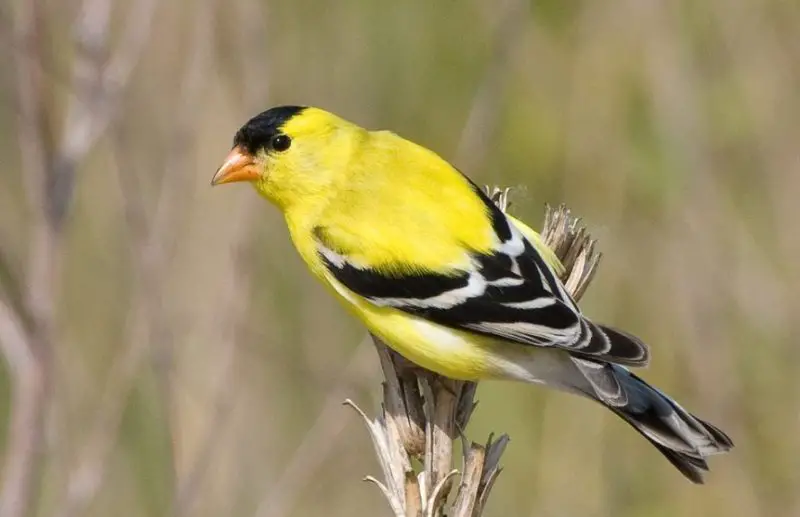
The American Goldfinch is a small, vibrant songbird known for its bright yellow plumage during the summer months. Males are especially striking with black caps, wings, and tails that contrast sharply with their golden body. Females and winter males are more subdued in color, appearing olive-brown with hints of yellow.
This species measures around 4.5 to 5 inches in length and is highly acrobatic, often seen clinging to seed heads or fluttering between plants. American Goldfinches favor open areas such as weedy fields, meadows, and backyard gardens. In Mississippi, they are present year-round but are most colorful and active in late spring and summer.
Their diet consists almost entirely of seeds, particularly sunflower, thistle (nyjer), and dandelion seeds. They frequently visit feeders stocked with these seeds and are less inclined to eat insects than other songbirds. Their sweet, warbling song and undulating flight pattern make them a joy to observe in Mississippi’s open spaces.
Mourning Dove (Zenaida macroura)
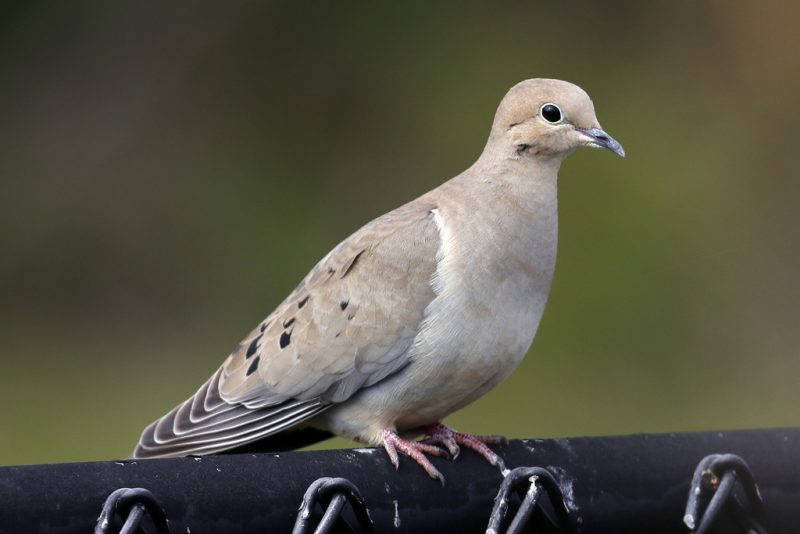
The Mourning Dove is a slender, graceful bird with a soft gray-brown body, long pointed tail, and black spots on its wings. Its name comes from the mournful, cooing sound it makes, often heard in the early morning or late evening. Their flight is fast and direct, with occasional sharp wing whistles.
Measuring about 9 to 13 inches in length, Mourning Doves are among the most common birds in Mississippi. They inhabit a wide range of habitats including farmland, open woods, suburban areas, and roadsides. They are ground foragers and are frequently seen in pairs or small flocks.
Their diet consists mainly of seeds, including millet, cracked corn, and sunflower seeds. They visit feeders regularly and are known for swallowing seeds whole and storing them in their crop. Mourning Doves nest in shrubs, trees, or even flat surfaces like porch beams. They are abundant and widespread throughout Mississippi year-round.
Northern Mockingbird (Mimus polyglottos)
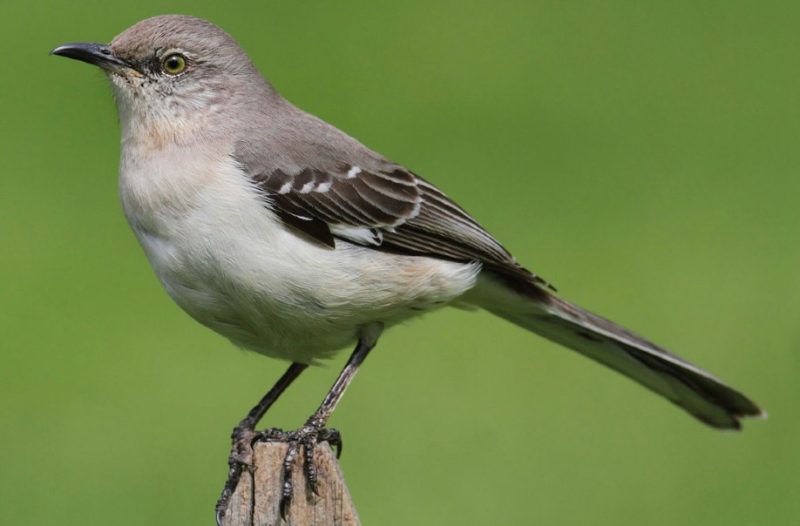
The Northern Mockingbird is the state bird of Mississippi and is well known for its extraordinary vocal abilities. It can mimic the songs of other birds and even mechanical noises, often stringing them together in long, impressive sequences. It has gray plumage, a white belly, and white patches on the wings that flash when it flies.
This bird measures about 8 to 10 inches in length and is a common sight in urban, suburban, and rural areas. It prefers open lawns with nearby shrubs or trees and is often seen perched high on telephone lines, fences, or rooftops. Mockingbirds are active defenders of their territory, sometimes chasing away much larger birds.
Their diet includes insects like beetles, ants, and caterpillars, as well as fruits and berries. They are adaptable feeders and will visit yards with berry bushes or mealworms. In Mississippi, Northern Mockingbirds are found statewide and are easily recognized by both their appearance and relentless singing, often continuing into the night.
Eastern Bluebird (Sialia sialis)
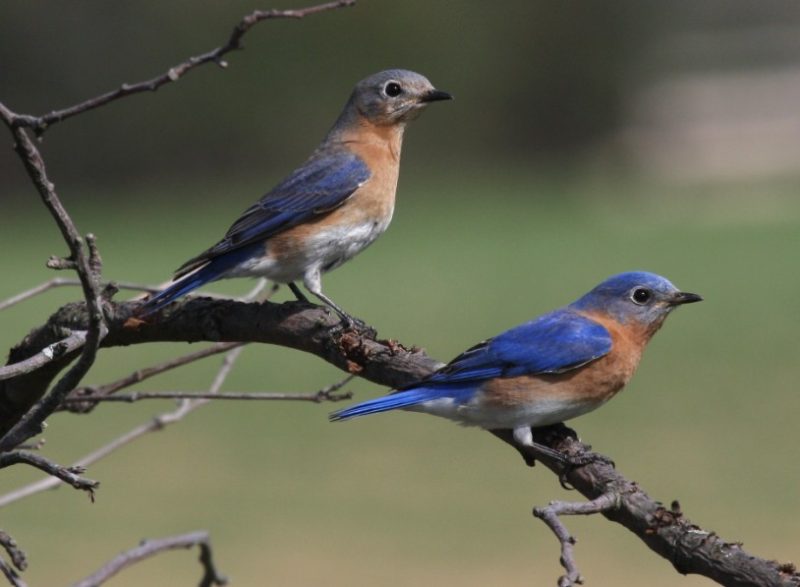
The Eastern Bluebird is a small thrush with a brilliant blue back, rusty orange chest, and white belly. Males are brighter in color, while females appear duller with more grayish-blue tones. Their soft warbling song and gentle behavior make them a favorite among birdwatchers.
Measuring about 6.5 to 7.5 inches in length, these birds are most often found in open areas with scattered trees, such as fields, orchards, golf courses, and large lawns. In Mississippi, they are present year-round and often use nest boxes placed on poles or fence posts.
Their diet includes insects during the warmer months and berries in the winter. Eastern Bluebirds frequently perch on low branches or fence lines while scanning the ground for prey. They are cavity nesters and rely heavily on human-provided nest boxes, especially where natural cavities are limited.
Brown Thrasher (Toxostoma rufum)
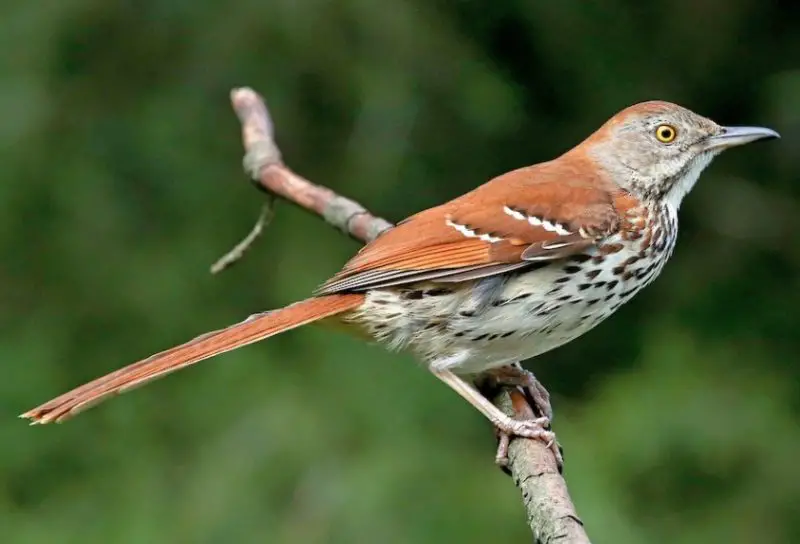
The Brown Thrasher is a medium-sized bird with a reddish-brown back, heavily streaked white underparts, and a long, slightly curved bill. It has bright yellow eyes and a long tail that often fans out. Known for its secretive nature and rich, musical voice, it is the only thrasher species commonly found in the eastern U.S.
Brown Thrashers measure around 9 to 12 inches long and prefer dense thickets, shrubs, and forest edges. They are skilled vocalists, capable of singing over 1,000 song variations by mimicking other birds and creating complex sequences. In Mississippi, they are year-round residents but more easily heard than seen.
Their diet includes insects, beetles, caterpillars, fruits, and seeds. They forage primarily on the ground by sweeping leaf litter with their beak. Brown Thrashers may visit feeders with fruit or suet but usually stick to natural food sources. They nest low in dense shrubs or tangles, making their nests hard to detect.
Eastern Towhee (Pipilo erythrophthalmus)
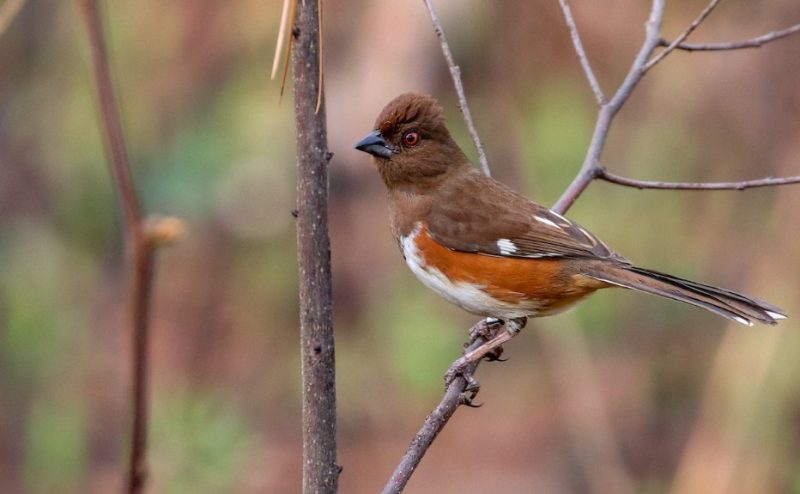
The Eastern Towhee is a striking ground-dwelling bird with a bold color pattern. Males have black upperparts, a white belly, and rich rufous sides, while females replace the black with warm brown. Both sexes have red eyes and long tails that flash white in flight. Their song sounds like “drink-your-tea,” often heard in the early mornings.
Eastern Towhees are about 7 to 8.5 inches in length and are common in shrubby woodlands, forest edges, and overgrown fields. They prefer areas with dense undergrowth where they can forage and stay concealed. In Mississippi, they are year-round residents, although more vocal and visible in the breeding season.
They feed mainly on insects, seeds, and berries, scratching through the leaf litter with both feet to uncover food. Their behavior is secretive but persistent, and they often perch low in thickets. Eastern Towhees are frequently heard before they are seen, making their call a useful tool for identification in Mississippi’s dense vegetation.
Chipping Sparrow (Spizella passerina)

The Chipping Sparrow is a small, active bird with a clean gray breast, black eye line, and a bright rusty-red cap during the breeding season. In non-breeding plumage, the cap turns brownish and the overall color becomes duller. Their trilling song is a familiar background sound in spring and summer.
These sparrows are about 5 inches long and are common in open woodlands, parks, and suburban lawns. In Mississippi, they are most often seen during spring and summer, where they forage on the ground for seeds and insects. They are not shy and will frequently hop across open ground in search of food.
Chipping Sparrows feed on grass seeds, small insects, and occasionally berries. They may visit feeders offering millet or small seed blends. They nest in shrubs or low trees, building neat, cup-shaped nests. These birds are widespread in Mississippi during the warmer months and often travel in small flocks.
Pine Warbler (Setophaga pinus)
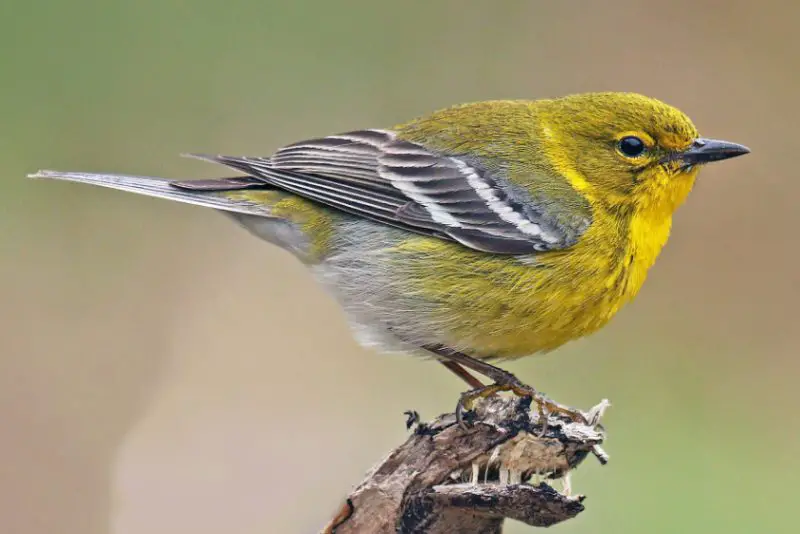
The Pine Warbler is a soft yellow songbird with olive-green tones, white wing bars, and pale underparts. Males are brighter, while females and juveniles are duller with more grayish or brownish tones. Their song is a musical trill, often mistaken for that of a Chipping Sparrow.
They measure about 5.5 to 6 inches in length and are closely tied to pine forests, where they spend much of their time foraging high in the canopy. In Mississippi, they are year-round residents and among the few warblers that regularly visit feeders, especially for suet and mealworms.
Pine Warblers eat insects, spiders, and seeds, especially pine seeds in colder months. They are more arboreal than many other warblers but will descend to feeders during winter. Their presence is a reliable indicator of nearby pine habitat in Mississippi’s woodlands.
Yellow-rumped Warbler (Setophaga coronata)
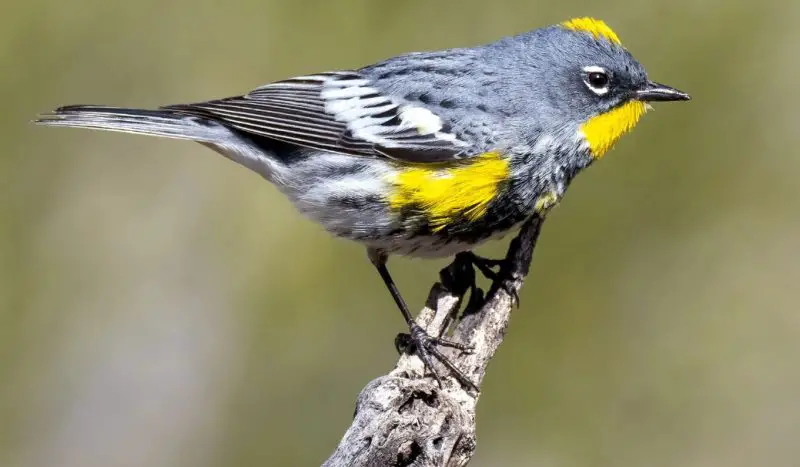
The Yellow-rumped Warbler is a versatile and abundant warbler, especially during Mississippi’s winter months. It has gray upperparts, white underparts, and distinctive yellow patches on the crown, sides, and rump—hence its nickname, “butter butt.” In winter, plumage is duller but still shows the signature yellow rump.
This bird is about 5 to 6 inches long and highly adaptable, found in forests, parks, thickets, and suburban areas. During colder seasons, it often joins mixed flocks and forages low in shrubs or trees. It is one of the most frequently spotted warblers in Mississippi during fall and winter migrations.
Yellow-rumped Warblers have a unique ability to digest waxes found in bayberries and wax myrtle, which allows them to winter farther north than other warblers. Their diet includes berries, insects, and suet. They may visit feeders offering suet cakes or fruit in Mississippi’s residential areas.
White-breasted Nuthatch (Sitta carolinensis)
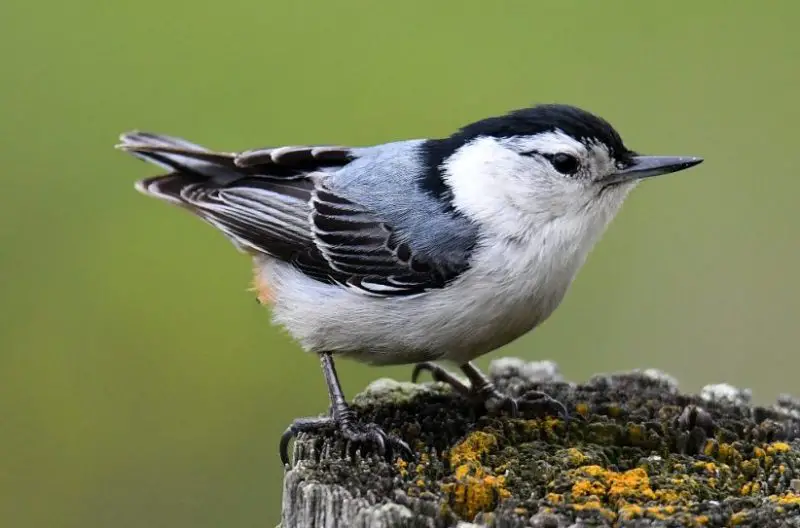
The White-breasted Nuthatch is a compact bird with a short tail, large head, and a long, slightly upturned bill. It has a white face and underparts, a black cap, and bluish-gray upperparts. This species is well known for its habit of creeping headfirst down tree trunks.
It measures about 5 to 6 inches in length and is found year-round in Mississippi, especially in mature deciduous forests and wooded neighborhoods. These birds are often seen climbing along bark surfaces in search of insects and seeds. Their nasal “yank-yank” call is a familiar sound in forested areas.
Their diet includes beetles, ants, caterpillars, seeds, and acorns. They often cache food by tucking seeds into bark crevices for later. White-breasted Nuthatches readily visit feeders offering sunflower seeds, suet, and peanuts. In Mississippi, they are most common in northern and central regions with older forest stands.
Ruby-throated Hummingbird (Archilochus colubris)
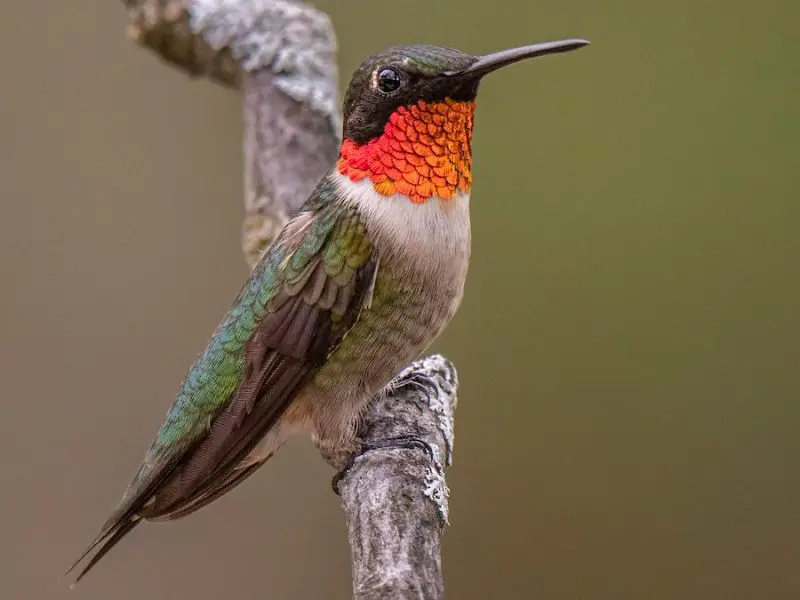
The Ruby-throated Hummingbird is a dazzling, tiny bird best known for its speed and brilliant plumage. Males have an iridescent ruby-red throat, emerald green back, and white underparts, while females lack the red throat and have a more subdued appearance. Their wings beat up to 80 times per second, allowing them to hover in mid-air like tiny helicopters.
These hummingbirds are only 3 to 3.5 inches long and are the only hummingbird species that breeds in the eastern United States. In Mississippi, they arrive in early spring and stay through late summer, favoring gardens, woodlands, and areas rich in nectar-producing flowers. They are especially drawn to red tubular blooms like trumpet vine and bee balm.
Their diet consists mainly of nectar, but they also consume small insects and spiders for protein. Ruby-throated Hummingbirds are frequent visitors to hummingbird feeders filled with sugar water (a 4:1 water-to-sugar ratio). They are most active at dawn and dusk and are territorial around feeding sites in Mississippi gardens.
Red-winged Blackbird (Agelaius phoeniceus)
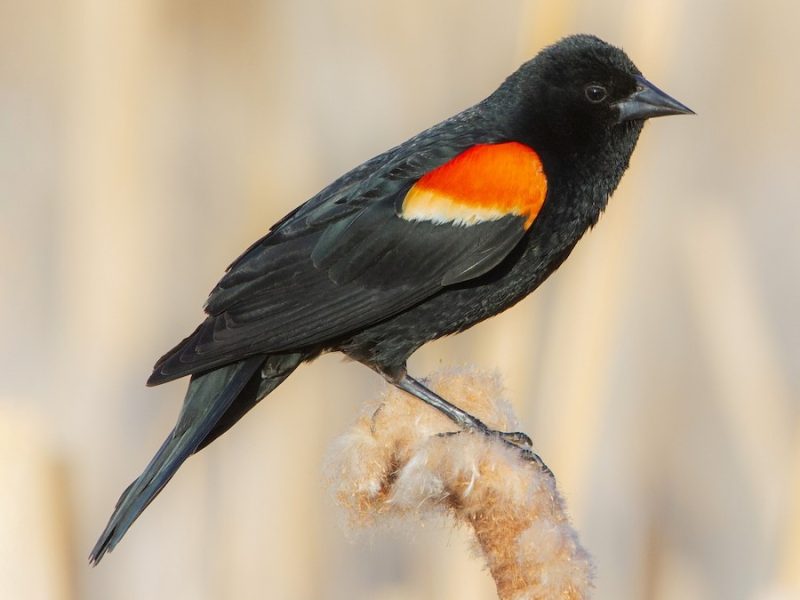
The Red-winged Blackbird is a familiar sight in Mississippi’s wetlands and marshy fields. Males are glossy black with striking red and yellow shoulder patches, which they display prominently during territorial calls. Females are brown and heavily streaked, often mistaken for sparrows.
These birds are about 7 to 9.5 inches long and are typically found in large flocks, especially outside of the breeding season. They thrive in cattail marshes, roadside ditches, and agricultural areas. In Mississippi, they are year-round residents and more numerous in the spring and summer months.
Red-winged Blackbirds feed on seeds, grains, and insects. During summer, they consume many caterpillars and beetles, while in winter they form large roosts and forage in open fields. Their loud “conk-a-ree” song is one of the first signs of spring across Mississippi’s wetlands.
Common Grackle (Quiscalus quiscula)
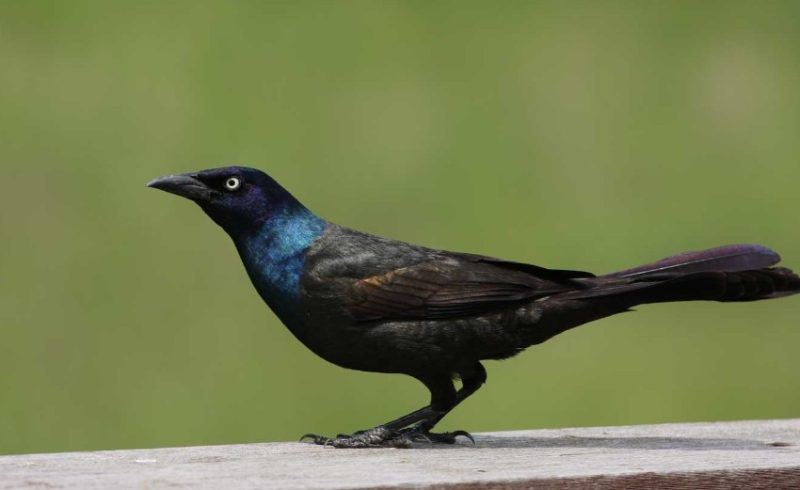
The Common Grackle is a large, glossy blackbird with an iridescent blue or purple sheen and piercing yellow eyes. It has a long tail and a slightly curved bill, giving it a distinct profile. Grackles often appear black from a distance but shine with metallic hues up close.
These birds measure around 11 to 13 inches and are highly social, often forming large, noisy flocks. They are found year-round in Mississippi, especially in open woodlands, fields, and suburban areas. They also gather in parking lots and agricultural zones where food is abundant.
Their diet is omnivorous and opportunistic, including grains, insects, seeds, fruits, and even small vertebrates or other birds’ eggs. They can be aggressive at feeders and are known to dominate bird tables. Common Grackles are widespread throughout Mississippi and are especially prominent in late summer and fall.
Brown-headed Cowbird (Molothrus ater)

The Brown-headed Cowbird is a glossy black bird with a distinct chocolate-brown head, giving it a two-toned appearance. Females are smaller and drabber, with plain brown coloring. These birds are best known for their brood parasitic behavior—they lay eggs in the nests of other species.
Measuring about 7 to 8.5 inches in length, cowbirds are found across Mississippi in open fields, pastures, and edges of forests. They often follow livestock, feeding on insects stirred up by hooves, which is how they got their name.
Brown-headed Cowbirds eat seeds, insects, and grass grains. They often join mixed flocks and visit feeders for millet or cracked corn. Their parasitic nesting strategy allows them to lay up to 40 eggs in a single season, relying on other species like sparrows or warblers to raise their young. This behavior has significant ecological impacts across Mississippi bird populations.
European Starling (Sturnus vulgaris)
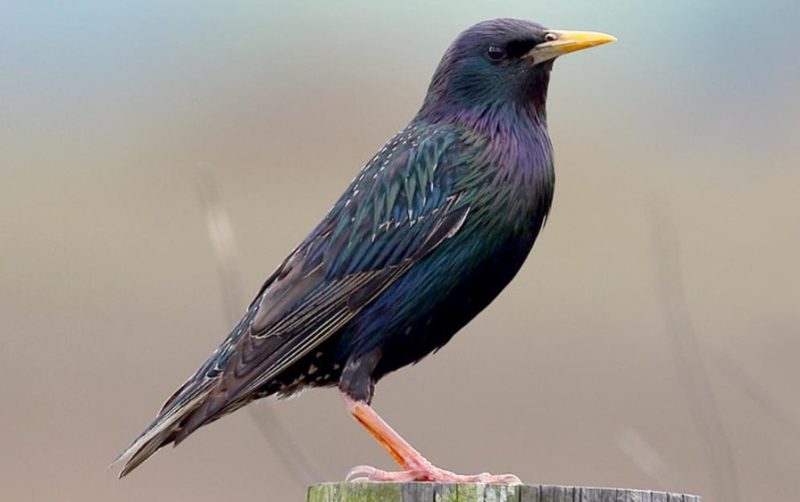
The European Starling is a medium-sized bird with dark, glossy plumage that shows green and purple iridescence in good light. In winter, their feathers are speckled with white, giving them a dotted appearance. They have a short tail, long slender bill, and strong legs.
These birds are about 7.5 to 9 inches long and are incredibly adaptable. Originally introduced from Europe, they now thrive in urban, suburban, and rural areas throughout Mississippi. Starlings often gather in massive flocks called murmurations, especially in the evening before roosting.
European Starlings eat insects, fruits, seeds, and even human scraps. They are excellent mimics, capable of copying the calls of other birds and mechanical sounds. Despite being non-native, they are now one of the most abundant and recognizable birds across Mississippi, frequently seen on lawns, power lines, and city streets.
Great Crested Flycatcher (Myiarchus crinitus)

The Great Crested Flycatcher is a bold, vocal bird with a lemon-yellow belly, olive back, and cinnamon-colored tail and wings. It has a slightly crested head and a stout bill, making it easily distinguishable from other flycatchers. This bird often announces its presence with a loud, rising “wheep!” call.
Measuring around 8.5 inches long, the Great Crested Flycatcher is a common summer resident in Mississippi’s woodlands and forest edges. It prefers areas with mature trees where it can find natural cavities for nesting. It also adapts to parks and suburban neighborhoods with tall trees.
This flycatcher feeds primarily on flying insects such as beetles, moths, and grasshoppers, which it catches on the wing. It also supplements its diet with berries. They often nest in tree hollows or nest boxes and are known to line their nests with shed snake skin—a behavior that adds to their unique reputation in Mississippi.
Indigo Bunting (Passerina cyanea)
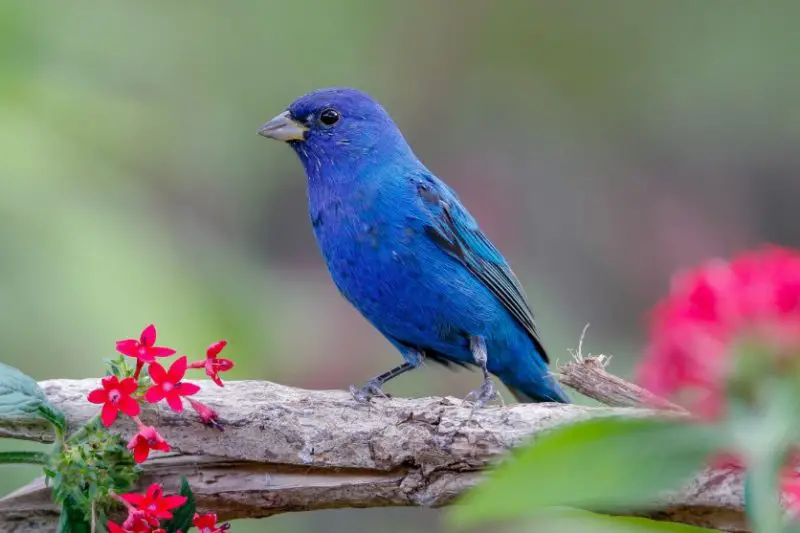
The Indigo Bunting is a small, vibrant songbird, with breeding males sporting brilliant, all-over blue plumage that shimmers in sunlight. Females and non-breeding males are brown with subtle blue tinges. Their cheerful, musical song is often heard along woodland edges and brushy fields.
These birds are about 5 inches long and favor shrubby areas, clearings, and roadsides in Mississippi. They arrive in spring to breed and are most visible during summer when males perch on high branches to sing and defend their territory.
Indigo Buntings eat seeds, berries, and insects. They forage in low vegetation and may visit feeders offering thistle or millet. Though small, they make long-distance migrations between Central America and the eastern U.S., returning each spring to Mississippi to nest and raise their young.
Eastern Phoebe (Sayornis phoebe)

The Eastern Phoebe is a modest-looking flycatcher with a grayish-brown upper body, pale underparts, and a slight crest. It’s best known for its signature “fee-bee” call and tail-bobbing behavior while perched. It lacks prominent wing bars or eye rings, giving it a clean, plain appearance.
It grows to about 6 to 7 inches long and is one of the earliest migrant songbirds to return to Mississippi in spring. This bird prefers open woodlands, forest edges, and human structures like bridges and buildings for nesting. Phoebes often build nests on ledges under eaves or porches.
Their diet consists mainly of flying insects such as flies, beetles, and wasps. They sally out from perches to catch prey mid-air, returning to the same spot repeatedly. Eastern Phoebes are helpful around homes and farms as natural pest controllers and are a welcome sight each spring in Mississippi.
Killdeer (Charadrius vociferus)

The Killdeer is a slender, long-legged plover with striking black double breast bands, a brown back, and a white belly. Its loud, high-pitched “kill-deer” call gives the bird its name and is often heard as it flies low over open ground.
These shorebirds are about 8 to 11 inches long and prefer dry, open areas such as gravel lots, pastures, lawns, and fields. They are common year-round in Mississippi and are one of the few shorebirds regularly found far from water.
Killdeer feed on insects, worms, and other small invertebrates, which they hunt by running and stopping in quick bursts across the ground. Their nests are shallow scrapes on bare ground, often placed in driveways or parking lots. When threatened, adults perform a dramatic “broken wing” act to lure predators away from their nests.
Great Blue Heron (Ardea herodias)
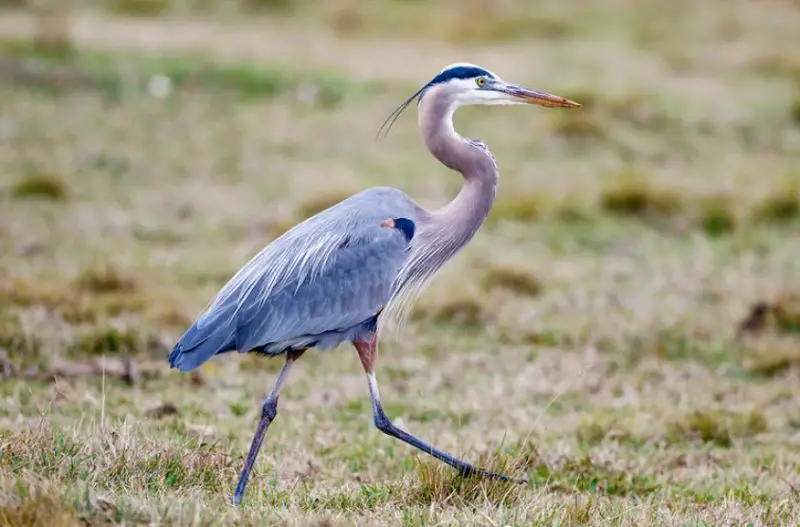
The Great Blue Heron is a majestic, tall wading bird with grayish-blue feathers, long legs, and a dagger-like bill. It has a white head with a black stripe that extends over the eye and long, flowing plumes in breeding season. Its slow, deliberate movements and statuesque posture make it a familiar sight along Mississippi’s waterways.
Standing about 4 feet tall with a wingspan up to 6.5 feet, it is the largest heron in North America. Great Blue Herons are found year-round in Mississippi along lakes, rivers, swamps, and coastal marshes. They often stand motionless in shallow water, waiting to spear fish with lightning-fast strikes.
Their diet is diverse and includes fish, amphibians, crustaceans, insects, and small mammals. Though primarily solitary hunters, they nest in colonies, called rookeries, high in trees near water. These regal birds are a common sight at dawn or dusk, gliding gracefully over wetlands across Mississippi.
Red-tailed Hawk (Buteo jamaicensis)
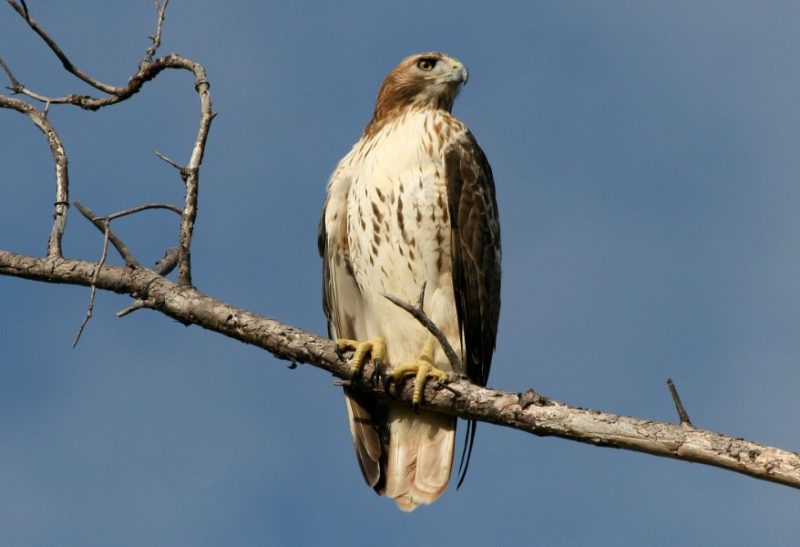
The Red-tailed Hawk is a large raptor recognized by its broad, rounded wings and reddish-brown tail. Its plumage varies but typically shows a brown back with a lighter, streaked underside. The hawk’s piercing, high-pitched scream is often heard in Mississippi’s skies.
Measuring about 18 to 26 inches long with a wingspan of up to 4 feet, Red-tailed Hawks are common throughout Mississippi, inhabiting open fields, woodlands, and along highways. They are often seen perched on poles or soaring in wide circles while searching for prey.
These hawks primarily hunt small mammals such as rodents, rabbits, and squirrels but will also take reptiles, birds, and carrion. They have keen eyesight, allowing them to spot prey from great heights. Red-tailed Hawks play a vital role in controlling pest populations across Mississippi’s diverse habitats.
Barred Owl (Strix varia)
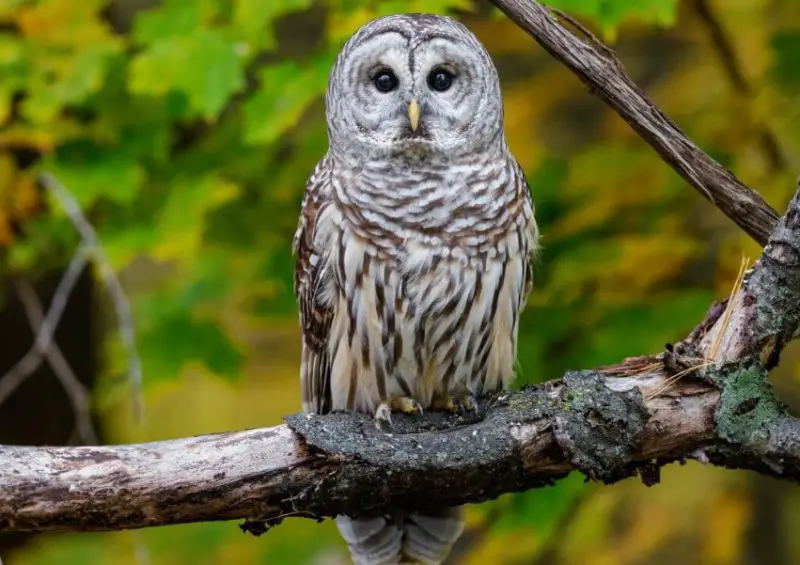
The Barred Owl is a large, stocky owl with rounded head and no ear tufts. It features distinctive horizontal barring on the chest and vertical streaks on the belly. Its dark eyes and hooting call (“Who cooks for you? Who cooks for you-all?”) are iconic in Mississippi’s forests.
They measure roughly 16 to 25 inches in length with a wingspan of about 3.5 to 4 feet. Barred Owls prefer mature woodlands and swampy areas in Mississippi where they nest in tree cavities or old nests. They are primarily nocturnal but may sometimes be heard or seen at dusk.
Barred Owls feed on small mammals, birds, amphibians, and invertebrates. They hunt silently, relying on acute hearing and vision to capture prey. These owls play a key role in Mississippi’s ecosystem by helping control populations of rodents and other small animals.
Blue-gray Gnatcatcher (Polioptila caerulea)
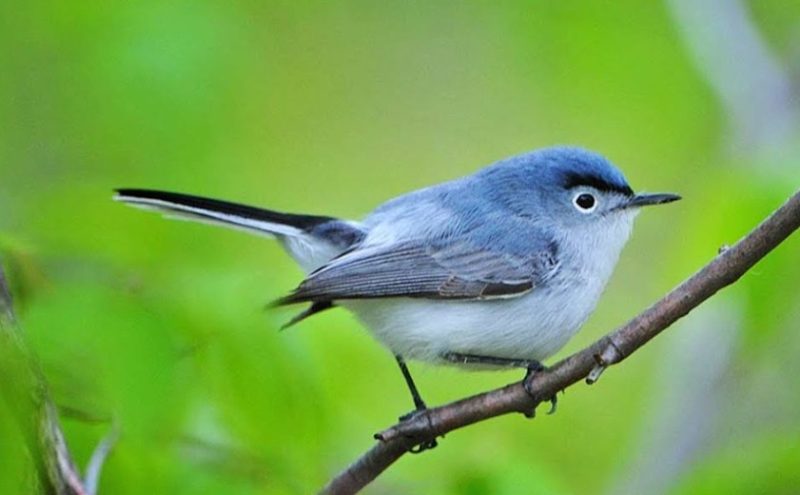
The Blue-gray Gnatcatcher is a tiny songbird with soft blue-gray plumage, white underparts, and a long black tail edged with white. It has a thin bill and large dark eyes, giving it a delicate appearance. This bird is known for its constant flicking tail and high-pitched calls.
About 4 to 5 inches in length, Blue-gray Gnatcatchers are active insectivores that inhabit open woodlands, brushy areas, and gardens across Mississippi during spring and summer. They build small, cup-shaped nests in tree forks.
Their diet consists mostly of tiny insects and spiders, which they glean from leaves and branches while fluttering actively through foliage. They are important for controlling insect populations and are a delightful sight during Mississippi’s warmer months.
Northern Flicker (Colaptes auratus)

The Northern Flicker is a medium-sized woodpecker with a brownish body covered in black spots and bars, a black bib on the chest, and a white rump patch visible in flight. The eastern variety features a red nape and a red mustache stripe on males.
They are about 11 to 12 inches long and found year-round in Mississippi’s woodlands, suburban areas, and open forests. Unlike many woodpeckers, Northern Flickers often forage on the ground, probing for ants and beetles.
Their diet mainly includes ants, termites, beetles, and other insects found in soil, supplemented by fruits and seeds. Flickers drum loudly on trees or metal surfaces to establish territory and attract mates. Their distinctive “wick-a-wick” call is a common sound in Mississippi woodlands.

